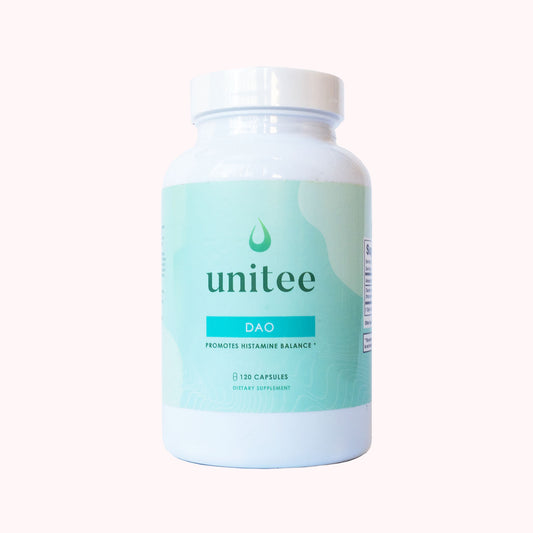Mouth watering on hot, buttered toast. A sweet, golden blob on top of a steaming bowl of oatmeal. Delicious stirred into a piping hot cup of tea.
We’re talking about honey!
While it may feel like such a treat when you're on an otherwise super restricted diet due to bloating, abdominal pain, itching skin and eyes, have you ever stopped mid-drizzle, a nagging thought at the back of your mind wondering whether honey could be behind your latest symptom flare up?
You're not alone! Many of my clients want to know the same thing: is honey high in histamine?
Today, I'm going to answer that question for you, and you're in for a treat—or maybe, a surprise! So, let's find out exactly where honey fits into this…um…sticky situation?
Honey, Allergies, and Histamine Release
Honey is the remarkable sweet natural substance you get when you bring honey bees and flower nectar together.
This golden elixir contains over 180 different compounds, including natural sugars—mostly glucose and fructose—enzymes, amino acids, vitamins, minerals, and various bioactive compounds.
It's the reason honey has been used in traditional medicine since ancient times to treat a variety of ailments. And although more research is required, more recent studies have had shown promising results using honey as a treatment for allergic conditions (1).
But wait! If honey is used for treating allergies, why does honey cause allergic-like symptoms in some people?
Well, it is actually not due to the honey itself.
The fact is, despite the allergy-like responses when eating honey, these people are not allergic to honey; they are allergic to one or more of the plant components, such as pollen, commonly found in honey - remember the bees and flower nectar coming together to make honey? That’s the pollen!
And it’s the pollen in the honey causing a histamine reaction when they eat the honey.
Histamine and Other Biogenic Amines in Honey
So, while honey itself is actually a low-histamine food (2), due to the fact honey may contain allergens like pollen, it can trigger the release of histamine, causing symptoms such as:
- Sneezing
- Runny nose
- Itchy eyes
- Skin rash
- Hives
- Headaches
- Nausea and vomiting
- Fainting
- Heart palpitations
But the pollen is not the only cause of these symptoms.
Honey can also contain small amounts of other biogenic amines like putrescine and cadaverine. These biogenic amines are related to histamine in that they too trigger histamine release from mast cells, contributing to the overall histamine load of the body.
The combination of these biogenic amines (histamine, putrescine and cadaverine) in honey is the reason some people absolutely cannot tolerate it. As the intake of these compounds soar, so too do their histamine levels and symptoms.
How much of these additional biogenic amines are present depends on the honey's origin, processing methods, and storage conditions (3). Generally, the fresher and less processed honey tends to have lower levels, making it more tolerable when eaten in smaller quantities, and doesn't have as dramatic an effect on production of symptoms (4).
If you do continue to struggle with histamine reactions when you’re eating honey no matter how fresh or unprocessed it is, don’t worry! You’re still about to enjoy a little sweetness in your life, and I have you covered!
Low-Histamine Honey Alternatives
Like I said above, even though it is safe for most histamine intolerance sufferers to consume honey, those who are super sensitive to the golden nectar should choose an alternative low-histamine natural sweetening agent.
Maple syrup, molasses, and pure jams and jellies are good options. Remember to use even natural sweeteners in moderation. It’s also crucial for gut and overall health to avoid all processed sugars and artificial sweeteners.
Honey as Part of a Low-Histamine Diet
The verdict is in: honey is a low-histamine food that most people—even those with a histamine sensitivity—can enjoy in moderation. While it may contain trace amounts of allergens and other biogenic amines that may lead to higher histamine levels, these levels are typically too low to cause issues for most people.
Everyone's tolerance is different, though. If you have histamine intolerance, start with small amounts of honey and observe your body's response. Consider keeping a food diary to track any reactions, and choose one of the honey-alternatives I’ve mentioned above should you feel like your histamine-symptoms are brought on by this sweet food.
References
- Aw Yong PY, Islam F, Harith HH, Israf DA, Tan JW, Tham CL. The Potential use of Honey as a Remedy for Allergic Diseases: A Mini Review. Frontiers in Pharmacology. 2021 Jan 26.
- Jochum C. Histamine Intolerance: Symptoms, Diagnosis, and Beyond. Nutrients. 2024 Apr 19;16(8):1219. doi: 10.3390/nu16081219. PMID: 38674909; PMCID: PMC11054089.
- Pereira Lima, GP., et al. Biogenic amines and stable isotopes in the quality and authenticity of honeys from Brazil. Food Chemistry. Volume 427, 30 November 2023, 136702
- Borges CV, Nunes A, Costa VE, Orsi R de O, Basilio LSP, Monteiro GC, et al. Tryptophan and Biogenic Amines in the Differentiation and Quality of Honey. International Journal of Tryptophan Research. 2022 Jan.

Anita Tee
My name is Anita Tee. I'm a nutritional scientist specializing in histamine intolerance. I hold a Master of Science in Personalized Nutrition and a Bachelor of Science in Human Biology and Psychology.
For the past ten years, I have used my experience in nutritional and medical health sciences to create a scientifically backed, natural approach to healthcare that relies 100% on evidence-based research.
As I previously suffered from - and overcame - histamine intolerance, my focus is to increase recognition and expand the available resources and protocols for resolving the disorder. To date, I have helped over 4,000 individuals fully resolve or better manage their histamine intolerance symptoms.







